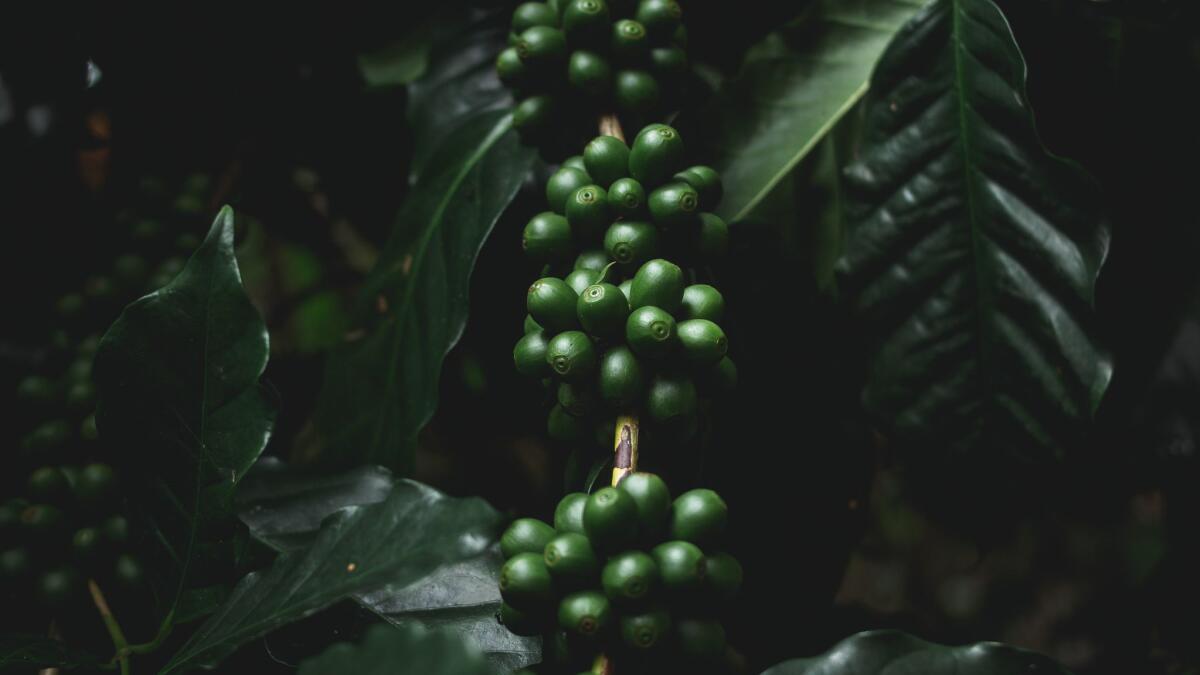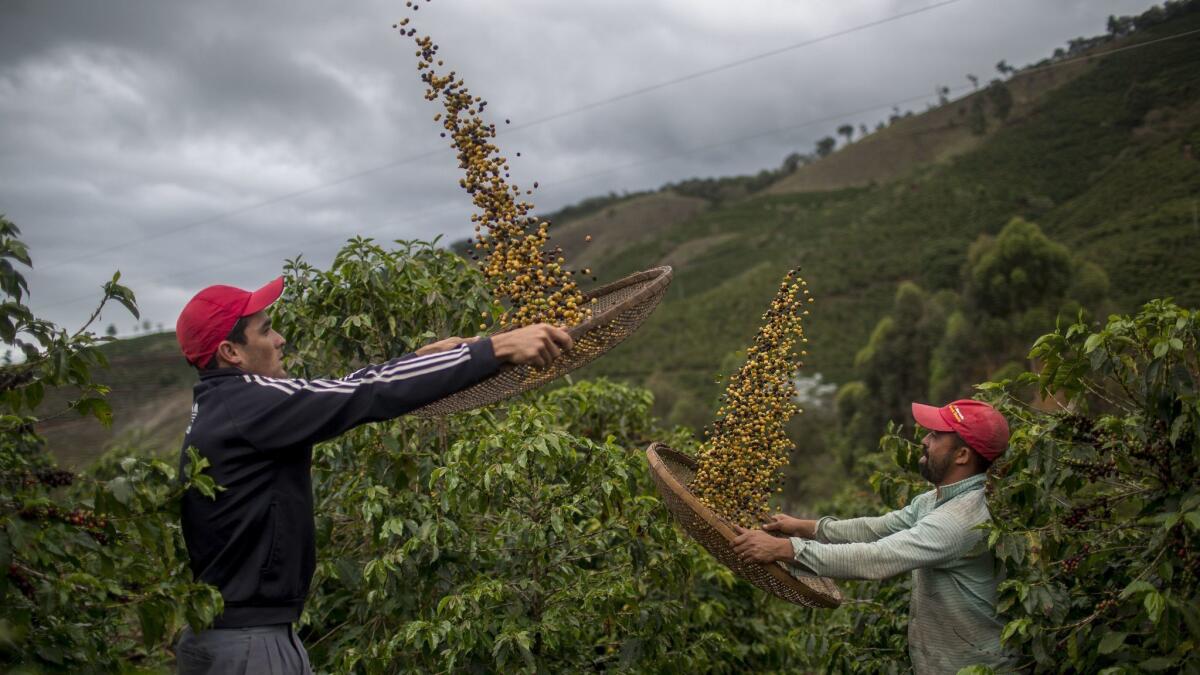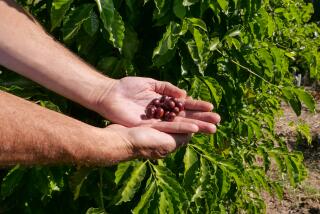The price of coffee is in crisis. Here’s why you should care

More than 20 million households around the world make their living producing coffee. The commodity futures market for coffee, known simply as the C, is used as a benchmark for the global price of a pound of green coffee — the raw product that roasters roast and you later steep at home.
Today, this price — and by extension the livelihoods of those who depend on that market — is in crisis.
As of this writing, the C — the cost of a pound of coffee — is around a dollar. That price is low enough to force many farmers to sell their coffee at a loss, making the lives of producers, already inherently rife with risk and uncertainty, even more tenuous.
Yes Plz delivers news with its morning coffee »
For most farmers the cost of production is around $1.20 per pound, according to Alejandro Cadena, co-founder and chief executive of Caravela Coffee. “$1.20 is a critical number because anything lower and they’re producing at a loss,” he said. “We’ve been trading below $1.20 for the past six months or so.”
In theory, the C operates on supply-and-demand fundamentals. But not all coffee-producing countries affect the global supply equally. Nor is supply the only factor that affects price, according to the International Coffee Organization’s (ICO) head of operations, Gerardo Patacconi. The ICO, established under the auspice of the United Nations in 1963, was founded in part as a response to problems in the commodity market.
“The oversupply now is due mainly to the larger producers: Brazil and Vietnam,” Patacconi says of the world’s two most productive coffee-producing countries. “There is also a strong element to consider — the relationship between currencies, and specifically in Brazil and the effect of devaluation.”

When the Brazilian real lost value against the U.S. dollar this year, Brazilian producers were all of a sudden selling their coffee for less. Every country around the world felt it.
What happens when a farmer operates at a loss?
“Farmers have no income, or their income is so reduced that farmers are unable to make investments in their farms,” says Hanna Neuschwander of World Coffee Research, an independent coffee agricultural organization.
When farmers can no longer afford to perform routine maintenance, the effects snowball. In 2012, coffee farms in Central and South America were hit with an epidemic of a disease called coffee leaf rust, or la roya. It cut the productivity of some countries, like El Salvador, in half.
More than a coffee shop, Collective Avenue co-op is a nurturing place for the Lynwood community »
“Fungicides, nutrition and pruning are really essential for controlling rust,” Neuschwander says. “But when you stop managing your farm because you can’t afford those inputs, then that’s when rust takes hold. It affects production in the current year but even worse the next year.”
The last 40 years have seen multiple instances of low C leading to leaf rust epidemics.
How does that affect workers?
Less farm management leads to lower incomes, which in turn leads to lower employment rates in coffee-producing communities as farm owners can no longer pay for hired labor.
“What happens when the agricultural labor market dries up is people move,” Neuschwander says. “The way the current coffee market is set up, it’s driving farmers out of coffee.”
Members of the current generation of coffee producers are nearing the end of their careers, and the low C is discouraging younger generations from taking up farming themselves. Although the consequences of the low C aren’t felt by coffee consumers today, the consolidation, reduced production and reduced diversity of coffee variety and origin will be.
Is specialty coffee the savior?
There is a tendency to think of the producers of specialty coffee — the exceptional beans that end up served in your favorite neighborhood blond-wood cafe — as different from the producers of lower-quality coffee, but in practice this distinction doesn’t really exist.
The premium paid for specialty coffee, already benchmarked to the C in many cases, often doesn’t cover the losses of the rest of the farmer’s harvest — the non-specialty coffee. When this happens, the entire business operates at a loss or near-loss.
Is anyone trying to fix this problem?
Both the Specialty Coffee Assn. and the ICO have announced initiatives to address the price crisis in the past month, focusing on exploring alternative pricing benchmarks and educating consumers about coffee farmers’ harsh economic reality.
How much this will actually affect reality remains to be seen. In the past, third-party certifications, like Fair Trade, have done a lot to increase consumer awareness of producer livelihoods while simultaneously being criticized for their ability to improve them.
Regardless of actions taken by industry, the C will change eventually. Farmers will be forced out of growing coffee by low selling prices, or a frost or new rust epidemic will wipe out harvests, or climate change will catch up to farms at ever-higher elevations, and global yields will decrease.
Which, in a way, will solve the C crisis as we know it today — the price will increase. The number of coffee farmers who will be left standing remains to be seen.
More to Read
Eat your way across L.A.
Get our weekly Tasting Notes newsletter for reviews, news and more.
You may occasionally receive promotional content from the Los Angeles Times.










